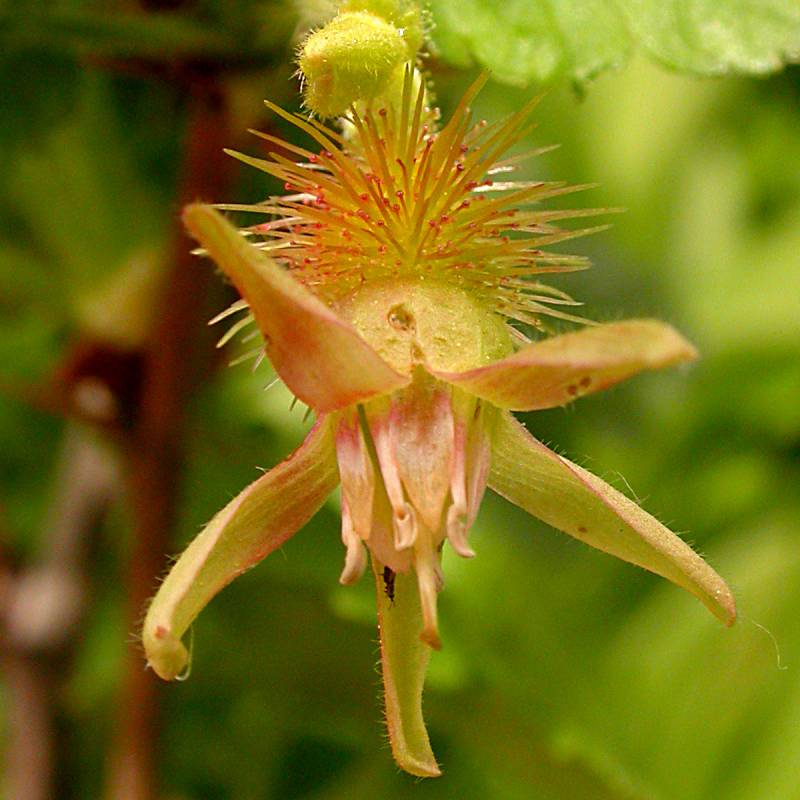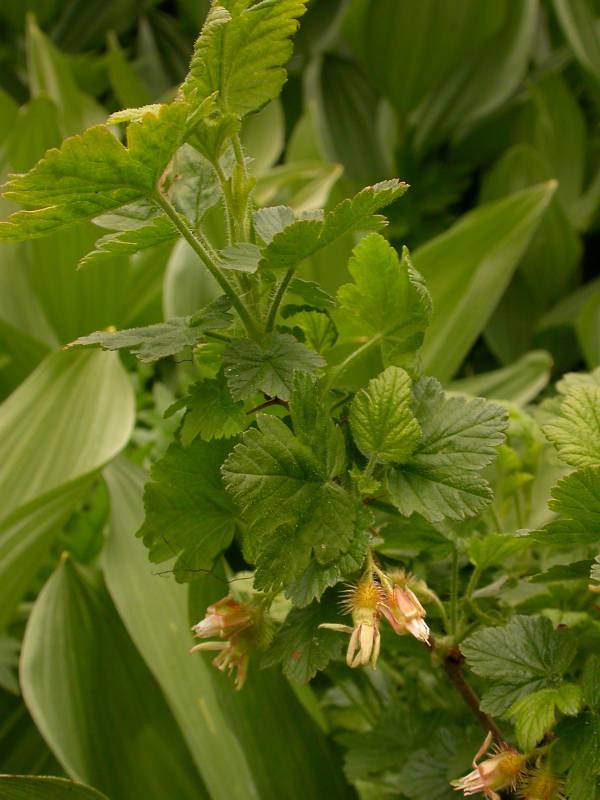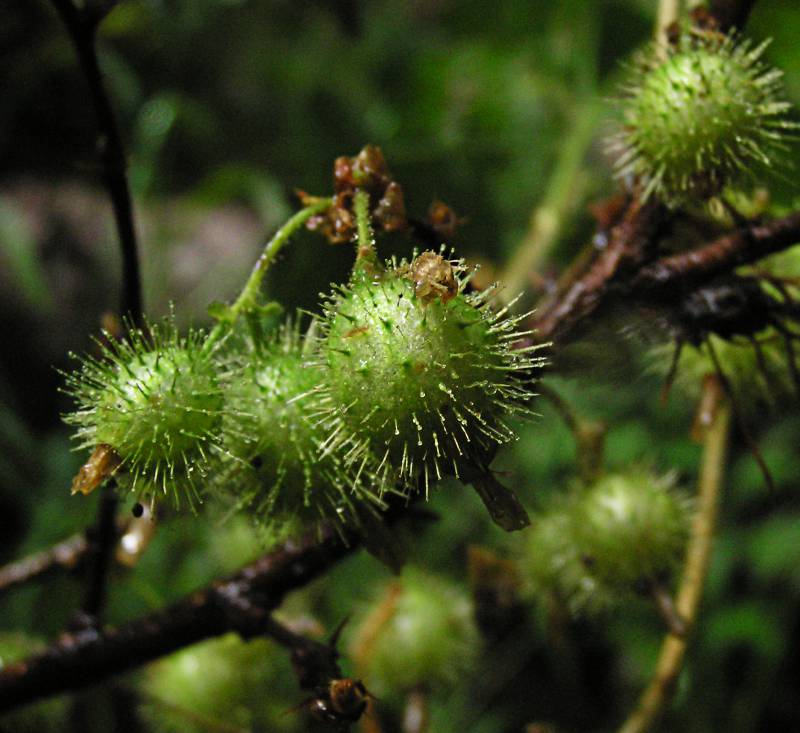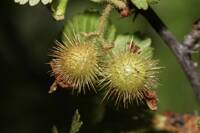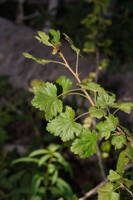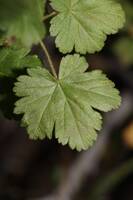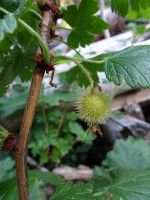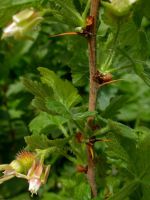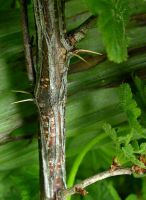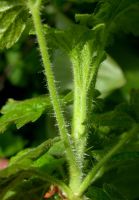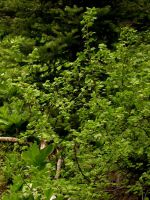Distribution: Occurring chiefly east of the Cascades crest in Washington; British Columbia to Oregon, east to Alberta.
Habitat: Forest openings in canyons and on ridges, mid-elevations in the mountains.
Flowers: May-July
Origin: Native
Growth Duration: Perennial
Conservation Status: Not of concern
Pollination: Bumblebees, bees, hummingbirds
Erect or ascending shrub up to 2 m. tall, the grayish-brown branches covered with grayish hairs and stalked glands; slightly curved nodal spines 1 or 3, 3-7 mm. long.
Leaves alternate, petiolate, the blades thin, broadly ovate with a cordate base, 2-5 cm. broad, mostly 3-lobed less than half their length, the lobes broad and rounded, again cleft into 2-5 coarse, rounded teeth.
Inflorescence of 1- to 2-flowered, pubescent and glandular, drooping racemes, the peduncles shorter than the leaves: pedicels stout, not jointed; calyx greenish, the tube narrowly bell-shaped, 2.5-3 mm. long, the 5 lobes narrowly oblong, 6-7 mm. long; petals 5, oblong, white, 3-4 mm. long, rounded; stamens 5; styles 2, fused half their length, glabrous; ovary inferior, glandular-bristly.
Berry sub-globose, 1 cm. long, reddish, densely yellowish-spiny.
Publication: Deut. Dendrol. 197. 1893.
PNW Herbaria: Specimen records of Ribes watsonianum in the Consortium of Pacific Northwest Herbaria database
WA Flora Checklist: Ribes watsonianum checklist entry
OregonFlora: Ribes watsonianum information
E-Flora BC: Ribes watsonianum atlas page
CalPhotos: Ribes watsonianum photos

